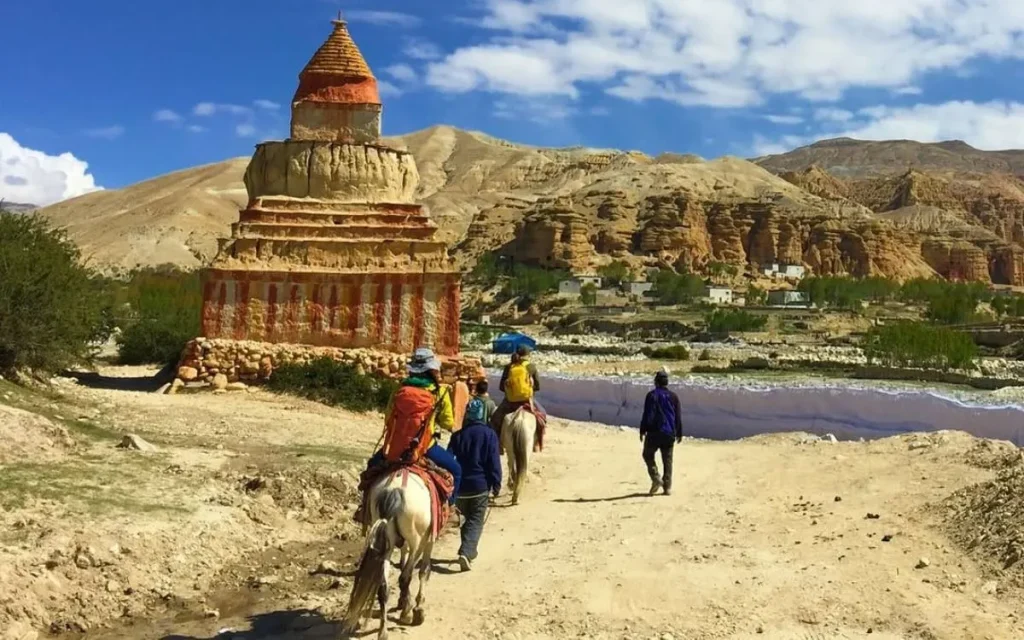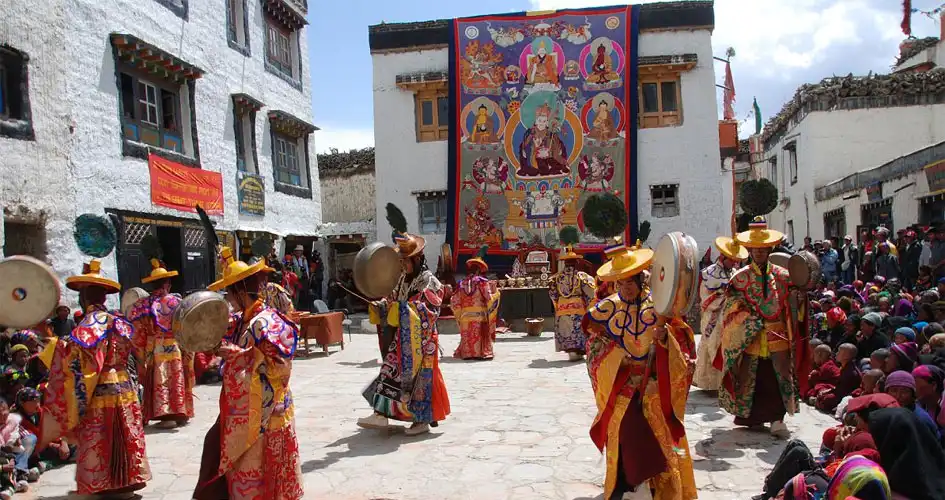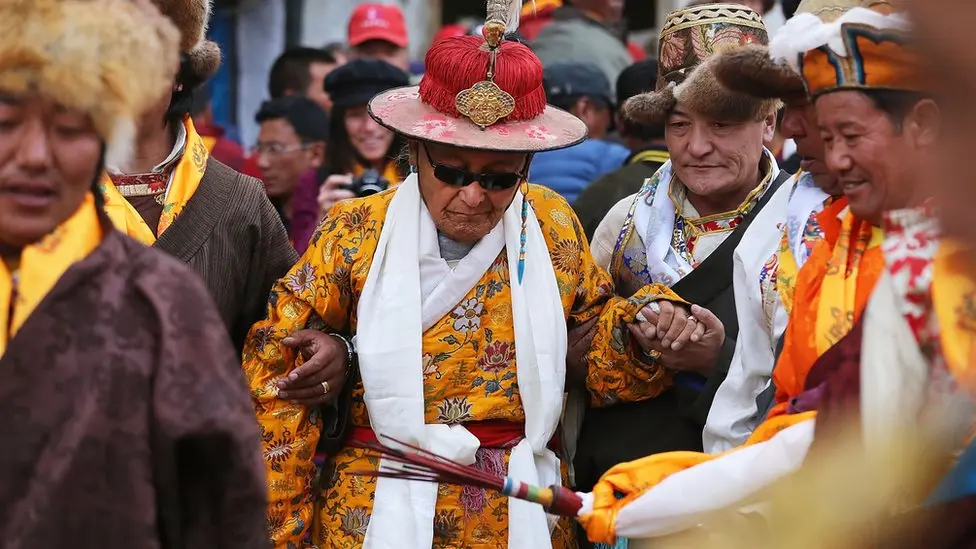Lo Manthang, also called the Kingdom of Lo, is a tranquil location in Upper Mustang, a remote trans-Himalayan valley in Nepal close to the Tibetan border. It is approximately 3,800 metres above sea level. However, Lo Manthang, the last forbidden kingdom in Nepal, and Lo Manthang King have a rich history that captivates tourists, making this place and its history unlike any other Nepali destination.
This lovely Himalayan village, encircled by stony cliffs and wind-carved canyons, is a veritable cultural oasis in the Nepalese Himalayan desert. Visitors are mesmerised by the heavenly sunrise over the Lo Manthang, which casts a picture of peace and antiquity by illuminating chortens, prayer flags, mud brick homes, and the historic royal palace.
Going to Lo Manthang is more than just a trekking destination; it’s like entering a new realm of Himalayan history, where the king’s century-old legacy continues to reverberate through the prayer flags and strong winds.
We will delve deeply into the lengthy history of the Lo Manthang Kingdom and Lo Manthang King in this article, which is a significant aspect of Nepal’s past.
Additionally, Nepal Adventure Trail offers expertly planned tours of Lo Manthang and Upper Mustang that allow you to experience the rich history of the forbidden kingdom up close.
The Birth of the Kingdom of Lo
The kingdom of Lo was founded by Ame Pal, who created a sovereign Himalayan state in the late 14th century, according to records and sources. As the royal capital, he also constructed the walled city of Lo Manthang, which had a central palace, watchtowers, and fortified walls.
Being the first king, he also created the first Mustang royal lineage, which ruled for centuries by combining spiritual and political leadership. Ame Pal brought Tibetan art, architecture, and Buddhism to Mustang while fortifying ties with Tibet to facilitate trade in salt, wool, and other goods.
Additionally, Lo Manthang became a centre of Buddhism, traditional art, and Himalayan culture as this kingdom grew, supporting monasteries, murals, and religious patronage by the Lo Manthang King.
Tibetan architectural influence is still evident in this village, where palaces, monasteries, and chortens in the Tibetan style have influenced the city’s aesthetic and given it a unique character.
As a protector of culture, religion, and trade, the Lo Manthang King’s influence extended beyond politics and contributed to Mustang’s status as a Himalayan Kingdom. Despite its isolation, the kingdom of Lo gained economic significance by positioning itself along high-altitude trade routes.

Lineage of the Lo Manthang King
It’s interesting to note that the Mustang royal dynasty, which was established in the 14th century by King Ame Pal, lasted for more than 600 years and had 25 generations of monarchs. And the kingdom of Lo preserved its independence and customs for centuries in spite of the political shifts in Tibet and Nepal.
In a similar vein, every King of Lo fulfilled two functions for the kingdom: he was the temporal ruler who oversaw governance, and he was also the spiritual patron of Tibetan Buddhism in Mustang. By making sure that religion and royalty remained entwined in the identity of the Mustang people, the Lo Manthang King encouraged the building and restoration of monasteries, artwork, and cultural festivals.
In addition, the Lhopa people were bound by the monarchy but were freed by faith, tradition, and allegiance to the throne.
The last Lo Manthang King – Jigme Dorje Palbar Bista
Born in 1928 in Lo Manthang, Jigme Dorje Palbar Bista was the 25th king of Mustang and a direct descendant of Ame Pal. Particularly after Mustang was incorporated into the contemporary Nepali state, he ruled similarly to his forebears, who served as both a cultural and spiritual leader rather than an absolute monarch.
Additionally, even after Nepal formally abolished the monarchy in 2008, ending royal rule across the country, the locals continued to hold the king of Lo Manthang in high regard and unofficial recognition. Jigme Dorje Palbar Bista was regarded as a father figure who embodied the tranquilly, solidity, and pride in Mustang identity until his death in 2016.
His humility and commitment to the cultural preservation of his kingdom were recognized even by foreign visitors and Nepalese officials.
Legacy of Mustang
The Mustang royal family continues to have ceremonial and cultural significance despite the end of political power; they frequently take part in significant religious and social gatherings.
Mustang, a culturally rich state, upholds the long-standing customs of respect by honoring the king’s ancestry during significant festivals like the Tiji Festival and Yartung Horse Festival. The royal palace, monasteries, and legacy of the forbidden kingdom of Lo Manthang are also still preserved by the royal family’s descendants.
Many villagers still adhere to the traditions established during royal rule, which explains their reverence for their royals. They also still call the late king Gyelpo, which means the protector.
Through the customs and pride of its people, Mustang’s identity is alive and well, and the legacy of the Lo Manthang King is not confined to history. And if you ever have the opportunity to visit this beautiful forbidden kingdom of Nepal, you will be able to witness the legacy for yourself.

People of the Kingdom of Lo
The Lhopa people, also referred to as the Lo-pa, are the kingdom’s indigenous guardians and the original occupants of Lo Manthang and Upper Mustang. Because of their long history of cultural and commercial exchange, their language, Loke, is closely related to Tibetan.
Speaking of the Lhopa people’s traditional clothing, they have a unique dress called Chubas (robes) made of wool and animal hides for warmth, as well as elaborate jewellery made of amber and turquoise coral that represents their social identity.
Deeply Buddhist, the Lhopa community preserves the old monasteries and wall paintings by practicing Tibetan Buddhism combined with Bon traditions. Today, the Lhopa people’s daily lives revolve around agriculture, animal husbandry, and communal cooperation, all of which are centuries-old traditions.
Trekking to the Land of the Lo Manthang King
Travelers from all over the world can now visit the once-forbidden kingdom to take in its breathtaking Himalayan views and rich history. You can select from a variety of travel packages offered by Nepal Adventure Trail to Lo Manthang and Upper Mustang, depending on your preferences.
Following the historic Trans-Himalayan Trail, the route to Lo Manthang typically starts in Jomsom or Kagbeni. Along the way, you pass famous sites like the Chosen Cave Complex, Lo La Pass, Ghar Gompa, and Dhakmar’s Red Cliffs. Surreal views of the mountains and distinctive Himalayan vegetation can be seen during this trek to Mustang.
A Restricted Area Permit (RAP) is required for foreign visitors, and hiring a porter and guide is advised for convenient travel and to gain an understanding of the forbidden kingdom of Nepal.
The best seasons for your Mustang trek are spring and autumn, which run from April to June and September to November, respectively, and provide you with stable weather and clear skies.
Respecting local customs is crucial while visiting Lo Manthang because it’s still a living cultural site and not just a trekking route. To protect this priceless Himalayan legacy and ensure that it endures for future generations, learn to follow the Leave No Trace philosophy.
Frequently Asked Questions
1. Who was the Lomanthang King?
The Lomanthang King ruled the ancient Kingdom of Lo in Upper Mustang, Nepal.
2. Who was the last King of Mustang?
Jigme Dorje Palbar Bista was the last King of Mustang, reigning until 2008.
3. Does Lo Manthang still have a king?
No, the monarchy ended in 2008, but the royal family remains respected.
4. Where is Lo Manthang located?
Lo Manthang is in Upper Mustang, northwestern Nepal, close to the Tibetan border.
5. Why is it called the “Last Forbidden Kingdom”?
Upper Mustang was closed to outsiders until 1992, preserving its royal heritage.
6. Who founded the Kingdom of Lo?
Ame Pal founded the Kingdom of Lo around 1380 AD and built Lo Manthang.
7. What is special about Lo Manthang Palace?
It’s a centuries-old, five-storey royal palace standing at the heart of the walled city.
8. Can tourists visit Lo Manthang?
Yes, but visitors need a Restricted Area Permit and must travel with a licensed guide.
9. What festivals are linked to the Lomanthang King?
The Tiji Festival, a vibrant cultural event, was traditionally led by the royal family.
10. How do I reach Lo Manthang?
Most travelers trek from Jomsom or take a jeep through Kagbeni and Dhakmar.
11. What makes the Kingdom of Lo unique?
Its ancient Tibetan culture, royal history, and untouched desert landscapes.
12. What language do people speak in Lo Manthang?
Locals speak Lowa, a dialect closely related to Tibetan.
13. What is the altitude of Lo Manthang?
Lo Manthang sits at about 3,840 meters (12,600 feet) above sea level.
14. When is the best time to visit Lo Manthang?
Spring (April–June) and Autumn (September–November) offer clear skies and mild weather.
15. How can I explore the land of the Lomanthang King?
Join an Upper Mustang trek with Nepal Adventure Trail for a guided royal experience.
